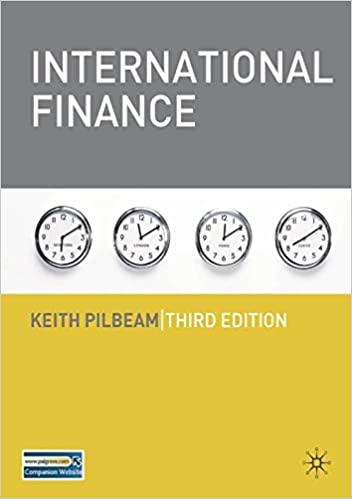Question
Intro The following table shows realized rates of return for two stocks. A B C 1 Year Stock A Stock B 2 1 5% 15%
Intro
The following table shows realized rates of return for two stocks.
| A | B | C | |
| 1 | Year | Stock A | Stock B |
| 2 | 1 | 5% | 15% |
| 3 | 2 | -14% | -14% |
| 4 | 3 | -6% | -9% |
| 5 | 4 | 5% | 28% |
| 6 | 5 | 14% | 8% |
| 7 | 6 | 12% | 4% |
Attempt 1/10 for 10 pts.
Part 1
What is the arithmetic average return for stock B?
Attempt 1/10 for 10 pts.
Part 2
What is the standard deviation for stock B?
Attempt 1/10 for 10 pts.
Part 3
What is the correlation of returns?
Attempt 1/10 for 10 pts.
Part 4
What is the expected return of a portfolio with 50% invested in stock A and the remainder in stock B?
Attempt 1/10 for 10 pts.
Part 5
What is the standard deviation of a portfolio with 50% invested in stock A and the remainder in stock B?
Attempt 1/8 for 8 pts.
Part 6
What should a rational, risk-averse investor do?
Invest only in stock A
Invest in both stocks
Invest only in stock B
Invest in neither stock
Correct
Since the correlation between the two stocks' returns is less than perfect (<1), there is a benefit from diversification, in the sense that the portfolio standard deviation is less than the average of the two individual standard deviations.
Step by Step Solution
There are 3 Steps involved in it
Step: 1

Get Instant Access to Expert-Tailored Solutions
See step-by-step solutions with expert insights and AI powered tools for academic success
Step: 2

Step: 3

Ace Your Homework with AI
Get the answers you need in no time with our AI-driven, step-by-step assistance
Get Started


